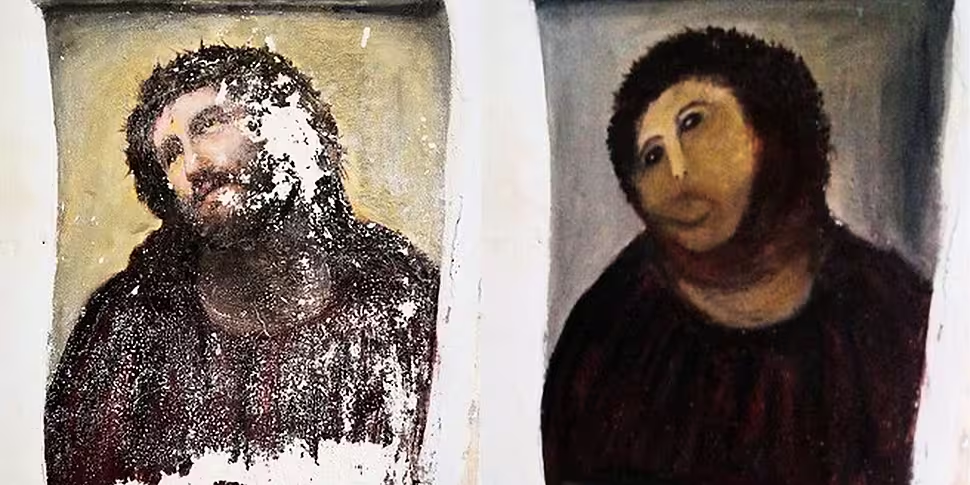The Ecce Homo is perhaps the most famous botched job in the history of the modern art world, propelled to international infamy after an elderly women, whose heart was in the right place, attempted to restore the damaged fresco only to create an amateur masterpiece with the disastrous results.
But now two antique dealers in Zaragoza in north-eastern Spain, believe they have found an original painting by Elias García Martinez, believed to have been used by the artist himself as a study for the mural in the chapel in Borja, which would later be updated by octogenarian Cecilia Giménez.
“It’s not a sketch, but a finished work, what the Italians call a modelo,” Ricardo Ostalé, an art gallery owner, told the local newspaper, the Heraldo de Aragon.
The oil painting is signed by the artist, complete with a year inscription dating it to one year before the fresco was added to the wall of the Sanctuary of Our Lady of Mercy in Borja. It likely made the trip to Borja with the artist, who used it as a visual aid while reproducing.
The 55cm by 45cm painting was discovered in the private collection of a local art lover earlier this week, with plans to display it beside the botched fresco. The discovery also means there is now a faithful representation of the original, showing exactly what it looked like before it was permanently damaged by the well-meaning artist trying to fix it.
But restorations plans would likely be met with negativity, with the botched and world-famous repair job having become a massive tourist draw that has brought hundreds of thousands of visitors to the city since 2012. The fresco was all but unknown until Giménez, now 86, attempted to restore it to its former glory. Her paintbrush skills were condemned by church authorities and art historians for destroying a 19th-century work with her limited skill, but when the fresco became a viral sensation and massive tourist draw, Giménez was credited for singlehandedly turning around the misfortunes of a town suffering under the strain of the global financial crisis.
Reproduced on t-shirts, mugs, and posters, the botched repairs of Ecce Homo have even been adapted into an opera.
While interest in purchasing the newly discovered painting has flooded in from art collectors worldwide, the gallery owners say it is not for sale and will remain where it is.
“The painting should stay in Borja,” said Ostalé. “It could be exhibited in the sanctuary next to that of Cecilia Giménez. At the moment, Borja’s Ecce Homo is one of the most visited paintings in the world and, in that sense, is one of the most genuinely popular works we have in Spain.”









